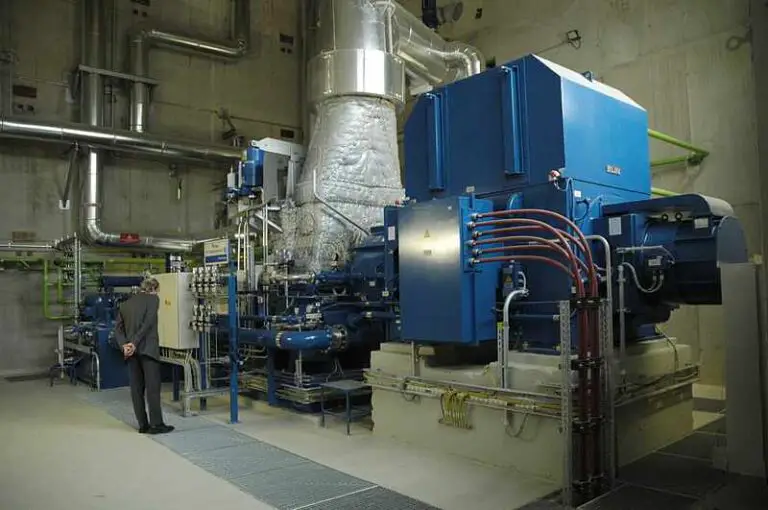5 Benefits of Machine Learning Explained
Benefits of machine learning are; unlimited improvement capacity, economic growth facilitation, high efficiency, risk reduction, and role in innovation.
This article discusses the benefits of machine learning, as follows;
1). Unlimited Improvement Capacity (as one of the Benefits of Machine Learning)
The potential of machine learning as an innovative technology is boundless, because of the unlimited capacity for improvement of ML systems and applications.
One of the ways in which this is understood is through the concept of continuous machine learning.
Continuous learning in machine learning systems refers to the process and capacity by which ML components like neural networks, are able to achieve continuous improvement in performance and versatility, with increase in the size of the analytical data base [6].
Unlike other artificial intelligence technologies, machine learning evolves progressively throughout its lifetime, by modifying its previous learning and algorithms as it collects and analyzes more data.
This capability makes machine learning very flexible, so that it can adapt to various tasks in different industries [11] [9].
2). High Efficiency
Machine learning improves efficiency in any area where it is applied, by conserving resources and operating with high accuracy.
The efficiency of machine learning can be evaluated within various contexts; including resources efficiency, energy efficiency, and analytical efficiency.
An advanced form of machine learning; deep learning, is efficient in terms of the accuracy of data-handling, so that it is capable of performing highly complex computations while enabling automation features [10].
High-performance machine learning is used to refer to the outcome of efficient operations of machine learning systems, which namely is an above-average performance while handling tasks.
Various applications can benefit from the efficiency of machine learning, which makes it useful for complex problem-solving and real-time computation in multiple industries [7].
3). Economic Growth Facilitation (as one of the Benefits of Machine Learning)
Machine learning affects the economy in a generally positive manner, by increasing the rate, efficiency and output quality of work.
Positive economic implications arise from the fact that machine learning complements human activity, thereby increasing gross domestic productivity at the regional level [4].
A the same time, machine learning is good for economic analysis, especially for identifying the key drivers of economic growth in any given area or time [8].
Economic forecasting can be performed using machine learning algorithms [5], and such analyses are applicable for identifying opportunities for economic growth.
4). Risk Reduction
Machine learning is used in risk management through AI-based data collection and analysis functions, security system management and anomaly detection, among other practices.
The analytical capability of machine learning algorithms helps to diagnose potential threats, and make decisions for security optimization [1].
Mitigation of risks in machine learning is achieved by various means, including multivariate analysis, real-time monitoring, and decision making [2].
5). Role in Innovation (as one of the Benefits of Machine Learning)
Machine learning and general artificial intelligence can help in innovation by introducing smart concepts for data management and computing, which can be integrated into existing technologies, or used in the development of new ones.
The analytical function of machine learning can be utilized when evaluating limitations in existing technologies or techniques, as well as to identify areas where innovative changes can be made.
In summary, machine learning plays the role of digitalization in innovation, whereby new approaches are developed by applying digital tools and functions [3].

Conclusion
Benefits of machine learning are;
1. Unlimited Improvement Capacity
2. High Efficiency
3. Economic Growth Facilitation
4. Risk Reduction
5. Role in Innovation
References
1). Aziz, S.; Dowling, M. (2019). "Machine Learning and AI for Risk Management." In: Lynn, T., Mooney, J., Rosati, P., Cummins, M. (eds) Disrupting Finance. Palgrave Studies in Digital Business & Enabling Technologies. Palgrave Pivot, Cham. Available at: https://doi.org/10.1007/978-3-030-02330-0_3. (Accessed 3 February 2023).
2). Ghaffarian, S.; Der Voort, M. V.; Valente, J.; Tekinerdogan, B.; De Mey, Y. (2022). "Machine learning-based farm risk management: A systematic mapping review." Computers and Electronics in Agriculture 192(1):106631. Available at: https://doi.org/10.1016/j.compag.2021.106631. (Accessed 3 February 2023).
3). Haefner, N.; Wincent, J.; Parida, V.; Gassmann, O. (2021). "Artificial intelligence and innovation management: A review, framework, and research agenda." Technological Forecasting and Social Change 162:120392. Available at: https://doi.org/10.1016/j.techfore.2020.120392. (Accessed 3 February 2023).
4). Hanson, R. (2000). "Economic Growth Given Machine Intelligence." Available at: https://www.semanticscholar.org/paper/Economic-Growth-Given-Machine-Intelligence-Hanson/f00de689ec0e93bc27d5e721cad99f32829d7ffb. (Accessed 3 February 2023).
5). Jiang, Z. (2022). "Prediction and Management of Regional Economic Scale Based on Machine Learning Model." Available at: https://doi.org/10.1155/2022/2083099. (Accessed 3 February 2023).
6). Lee, C. S.; Lee, A. Y. (2020). "Applications of continual learning machine learning in clinical practice." Lancet Digit Health. 2020 Jun; 2(6): e279–e281. Available at: https://www.ncbi.nlm.nih.gov/pmc/articles/PMC8259323/. (Accessed 3 February 2023).
7). Mahmood, A.; Wang, J-L. (2020). "Machine learning for high performance organic solar cells: Current scenario and future prospects." Energy & Environmental Science 14(1). Available at: https://doi.org/10.1039/d0ee02838j. (Accessed 3 February 2023).
8). Ofori, I. K.; Obeng, C. K.; Asongu, S. (2022). "What Really Drives Economic Growth in Sub-Saharan Africa? Evidence from The Lasso Regularization and Inferential Techniques." Forthcoming: Journal of the Knowledge Economy. Available at: https://doi.org/10.21203/rs.3.rs-2205215/v1. (Accessed 3 February 2023).
9). Osuwa, A. A.; Oztoprak, H. (2021). "Importance Of Continuous Improvement of Machine Learning Algorithms From A Health Care Management And Management Information Systems Perspective." 2021 International Conference on Engineering and Emerging Technologies (ICEET). Available at: https://doi.org/10.1109/ICEET53442.2021.9659597. (Accessed 3 February 2023).
10). Tien, P. W.; Wei, S.; Darkwa, J.; Wood, C.; Calautit, J. K. (2022). "Machine Learning and Deep Learning Methods for Enhancing Building Energy Efficiency and Indoor Environmental Quality – A Review." Energy and AI, Volume 10, November 2022, 100198. Available at: https://doi.org/10.1016/j.egyai.2022.100198. (Accessed 3 February 2023).
11). Yska, S.; Bustos, D.; Guedes, J. C. (2023). "Machine Learning Applications for Continuous Improvement in Integrated Management Systems: A Short Review." In: , et al. Occupational and Environmental Safety and Health IV. Studies in Systems, Decision and Control, vol 449. Springer, Cham. Available at: https://doi.org/10.1007/978-3-031-12547-8_43. (Accessed 3 February 2023).
